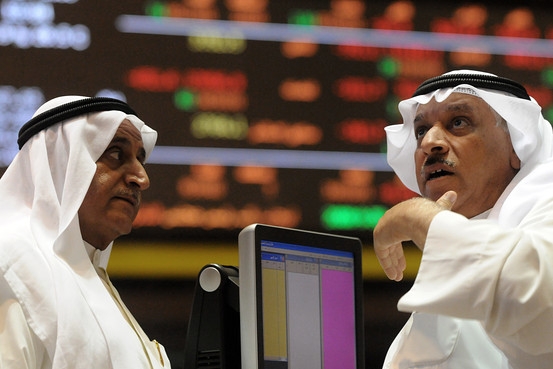The global economic picture is expected to remain murky in H2, 2012, as major economies continue to tread water without some discernible uptrend. Employment growth will curtail as Europe grapples with austerity and American businesses maintain tight purse strings. In this context, the International Monetary Fund (IMF) expects Europe to contract -0.3 percent in 2012, followed by a modest +0.7 percent growth in 2013. Chinese growth is expected to significantly slowdown in 2012 to +8.0 percent from +9.2 percent in 2011. Saudi Arabia's GDP growth will be slower but still healthy at +6.0 percent in 2012, according to a report by Riyad Capital.
Overall for the world economy 2013 should be better than 2012
For 2013, although the IMF is expecting +4.1 percent GDP growth for Saudi Arabia, Bloomberg consensus forecast is +3.1 percent. Overall for the world economy 2013 should be better than 2012, however skepticism is growing fueled by the uncertain future for the euro and its unpredictable impact.
Oil prices
Given the weaker economic environment, oil price moved from a high of about $110 a barrel to a low of $78 a barrel in the first half of 2012. In the past three months, prices staged a recovery and found support in the $85 to $95 range despite an absence of durable change in the economic environment. Price changes are partially a result of inverse movements of the US dollar, which gained strength against major currencies in early summer and subsequently eased.
The International Energy Agency (IEA) expects non-OECD oil demand to surpass that of OECD in 2013, comprising some 45.7 mbd out of the total 90.5 mbd. This, Riyadh Capital said has significant implications for oil exporters such as Saudi Arabia indicating a more diversified market for their product. If Western economies stagnate, oil demand will be supported through developing economies. Even with the interdependence of economies, we envision limited prospects of sustained declines in oil prices. Any correction will be welcomed through higher consumption. As such, Oxford Economics forecasts Saudi oil production to continue at +2.1 percent CAGR through 2020 reaching 11.7 mbd from the current 9.9 mbd. However, IMF forecasts highlight a troubling trend of declining revenues for Saudi Arabia over the next five years.
If Western economies stagnate, oil demand will be supported through developing economies
Revenues are projected to decline from $351 billion in 2012 to $296 billion by 2017.
The report said employment growth for young Saudis has come under the spotlight in the past two years as more state resources are allocated to education and training programs. The total population is expected to register +2.1 percent CAGR through the next five years reaching nearly 32 million, providing an expanding retail target market for banks.
Low rates
The prevailing low rate environment pressured sector revenues in 2011 which showed signs of improvement in 2012 as volume compensated for yields. Riyad Capital expects rates to remain benign through 2013 inline with facilitative policy adopted by the US. This could render Saudi banks heavily dependent on volume growth to boost revenues, which in our view will become increasingly difficult.
Alternative vehicles to park liquidity: high grade corporate issues and sukuk
Consequently, banks will need to raise their risk appetite in search of yields. Second, with European debt markets rattled, yields on investment grade securities have hit record lows further squeezing banks' investment income. Compounded by dwindling supply of Saudi government bonds, the banks will need to source alternative vehicles to park liquidity such as high grade corporate issues and sukuk.
Arab News
12 September






















































